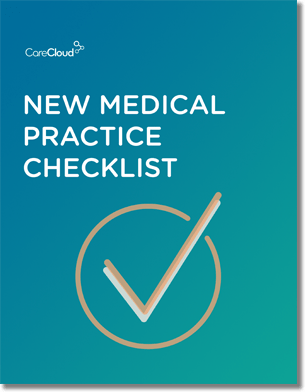Considering the amount of information available on electronic health records, it’s not unbelievable to learn quite a bit of it is misinformed.
However, considering the importance of implementing EHRs for the health care industry and its patients, we should try to remedy the number of misconceptions and twisted truths we’ve allowed our physicians to adopt.
What’s the best way to do it? Spot the misconception, address it, and then disprove it. Below we address four common misconceptions surrounding electronic health records.
“Implementing an EHR is little more than an IT project.”
Contrary to the belief of some, electronic health records are more than just an IT project. There are several phases, really. First, practices must research and fully understand what constitutes an EHR – from understanding how it impacts workflows and processes to determine functional and technical requirements.
Lack of proper planning will lead to avoidable extensions in scope, timeline, and budget throughout various phases of EHR implementation.
“EHRs are a shortcut to Meaningful Use.”
Meaningful Use criteria and incentives have caused a bit of an uproar within healthcare organizations throughout the country, in both positive and negative ways.
The government meant to inspire quality patient care through Meaningful Use criteria, which organizations are losing sight of in light of the government’s incentive programs. Hospitals and practices are speeding to acquire Meaningful Use-certified EHRs in pursuit of payouts.
That’s not going to cut it, however. Your practice must ensure that other areas in need of technology – imaging, billing and administrative scheduling – aren’t neglected. You won’t be a meaningful user without them.
“The job is done following implementation.”
While a huge part of the challenge is actually implementing the electronic health record system and preparing a practice for its arrival, that’s only akin to acquiring a driver’s license – afterward, it’s time to really become comfortable with driving, learning the rules of the road and respecting other drivers in the process.
Doctors must show patients their medical records and data on a screen now, interpreting feedback generated by the EHR. In other words, they must effectively express themselves with the new technology. Furthermore, becoming accustomed to new habits like note dictation and ePrescriptions takes time. The extra work is worth it in the end, though, as you’ll see in the next section.
“EHRs slow you down and are less efficient than paper.”
Many doctors complain about lengthier visits and processing times with their new electronic health records. Some physicians claim EHRs slow them down, causing them to pause during patient visits to input an allergy or write down a certain symptom they can’t find on a drop down.
However, considering the errors and challenges of handwriting and the single point of access of a paper system, EHRs become a refreshing solution once physicians become accustomed to them.
While there are still some semantic interoperability issues that need normalizing, an effectively designed and used EHR not only saves hours of administrative hassles and provides more time with patients, it helps put an end to the industry’s colossal paper costs.
What EHR misconceptions did you fall for at first?

Do you know what you need when setting up a new medical practice?



